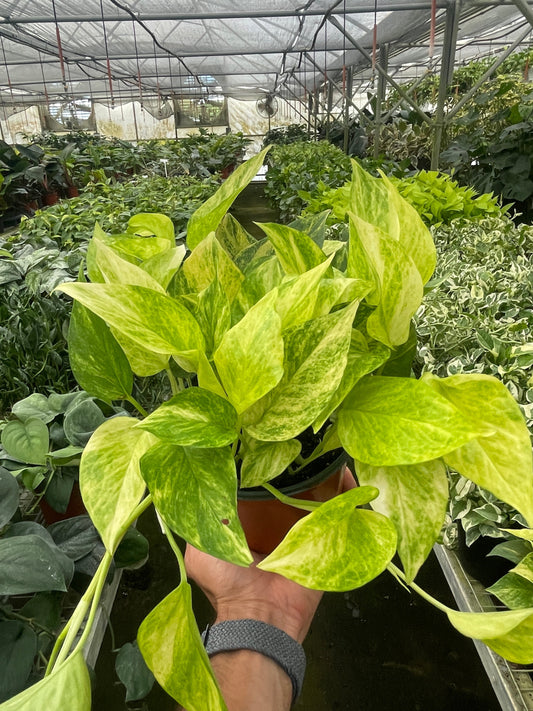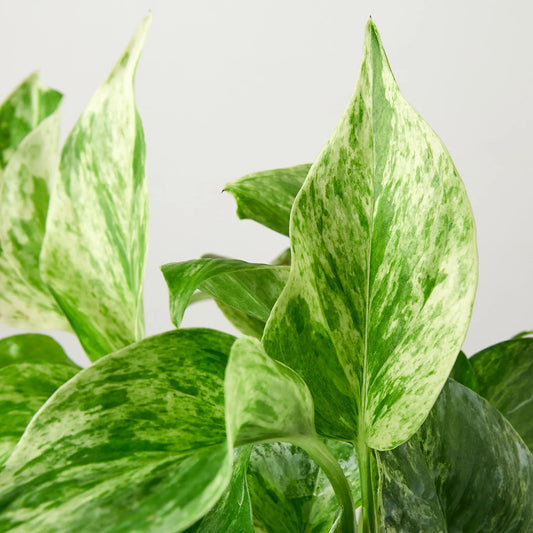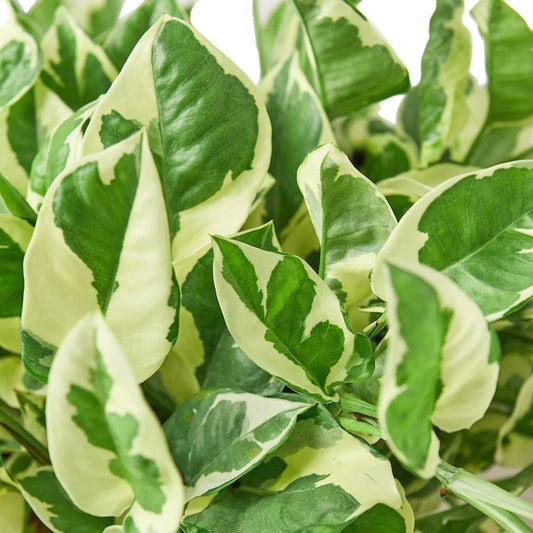How To Prune a Sago Palm (The RIGHT Way)
Cafe Planta Team
Pruning a sago palm might seem a bit intimidating at first, especially if you're a beginner in the world of plant care. But once you understand the basics, it's actually a rewarding task that can help your plant thrive. Whether you're a seasoned plant lover or just starting your journey, learning how to prune your sago palm the right way will ensure it stays healthy and vibrant.
This article will walk you through the step-by-step process of pruning your sago palm. We'll cover everything from the tools you'll need to the best time to prune, and even some common mistakes to avoid. By the end, you'll have all the know-how you need to keep your sago palm looking its best.
Understanding Your Sago Palm
Before you start snipping away, it's important to get to know your sago palm a little better. Despite its name, the sago palm (Cycas revoluta) isn't actually a palm at all. It's a cycad, which is a very primitive plant form that has been around for millions of years. This plant is known for its unique appearance, with a thick trunk and a crown of glossy, feather-like leaves.
One thing to note is that sago palms grow very slowly. This means they don't need to be pruned as often as other plants. However, occasional pruning can help maintain their shape and remove any dead or damaged leaves that might be taking away from the plant's overall health and appearance.
Understanding the growth pattern of your sago palm will help you decide which parts to prune. The new growth emerges from the center of the plant, and older leaves will naturally yellow and die off over time. These are the leaves you'll want to focus on when it comes to pruning.
When to Prune Your Sago Palm
Timing is everything in plant care, and pruning your sago palm is no exception. The best time to prune is during the plant's dormant period, which typically occurs in late winter or early spring. This is when the plant is not actively growing, so pruning will cause less stress.
Pruning during this time allows the plant to focus its energy on producing new growth when the growing season begins. If you prune during the active growth period, you risk cutting off new growth that's just starting to develop, which can set your plant back.
That said, if you notice dead or diseased leaves at any time of the year, it's a good idea to remove them promptly. This helps prevent any potential spread of disease and keeps your plant looking its best.
Gathering Your Tools
Pruning a sago palm doesn't require a lot of fancy equipment, but having the right tools on hand can make the process much easier. Here's what you'll need:
- Pruning shears: A good pair of sharp pruning shears is essential for making clean cuts.
- Gloves: Sago palms have spiky leaves that can be quite sharp, so it's a good idea to protect your hands.
- Disinfectant: Use this to clean your tools before and after pruning to prevent the spread of disease.
Before you start, make sure your tools are clean and sharp. Dull or dirty tools can damage your plant and may introduce harmful pathogens.
How to Prune Your Sago Palm
Now that you've got your tools ready and your timing is right, it's time to get down to business. Follow these steps to prune your sago palm properly:
- Identify the leaves to prune: Look for yellowed, dead, or damaged leaves. These are the ones that need to go.
- Cut close to the trunk: When removing leaves, make your cuts as close to the trunk as possible without damaging it. This helps the plant heal faster.
- Work in sections: Divide the plant into sections and work on one area at a time to ensure you don't miss any leaves that need pruning.
- Avoid removing too many leaves: Try to keep at least two-thirds of the plant's leaves intact to ensure it can still photosynthesize effectively.
Pruning can sometimes feel like you're taking a risk, but remember that it's all part of helping your plant grow stronger and healthier.
Common Mistakes to Avoid
Even experienced plant parents make mistakes from time to time. Here are a few common pitfalls to watch out for when pruning your sago palm:
- Over-pruning: Removing too many leaves at once can stress the plant. Aim to remove only what's necessary.
- Pruning at the wrong time: As mentioned earlier, pruning during the plant's active growth period can hinder new development.
- Ignoring tool hygiene: Always disinfect your tools before and after use to prevent disease spread.
Being mindful of these mistakes will help you avoid setbacks and keep your sago palm in top condition.
Dealing with Pests and Diseases
While sago palms are relatively hardy, they're not immune to pests and diseases. Common issues include scale insects, mealybugs, and fungal infections. Regular pruning can help you spot these problems early, but you'll need to take additional steps to treat them.
For pest infestations, you can try using insecticidal soap or neem oil. Apply according to the instructions, and be sure to treat both the top and bottom of the leaves. For fungal infections, improving air circulation around the plant can help, along with using a fungicide if necessary.
Keep an eye on your plant and act quickly if you notice any signs of trouble. The sooner you address these issues, the easier they are to manage.
Designing a Plant-Friendly Space
Now that you're confident in your pruning skills, it's time to think about where your sago palm will live. These plants love bright, indirect light and well-draining soil. If you can provide those conditions, your plant will be a happy camper.
When choosing a spot for your sago palm, keep in mind that they can grow quite large over time. Make sure you have enough space to accommodate the plant as it matures. If you're adding other plants to the mix, consider how they'll interact with each other. Grouping plants with similar light and water needs can make care easier.
By thoughtfully designing your plant space, you can create a beautiful and harmonious environment that both you and your plants will enjoy.
Repotting Your Sago Palm
Repotting is another important aspect of sago palm care, though it doesn't need to be done as often as pruning. Typically, you'll want to repot your sago palm every three to five years, or when you notice that it's becoming root-bound.
Steps to Repot Your Sago Palm:
- Choose the right pot: Select a pot that's one size larger than the current one, with good drainage holes.
- Prepare the soil: Use a well-draining soil mix, such as a cactus or succulent blend.
- Remove the plant: Carefully take the plant out of its current pot, loosening the roots if necessary.
- Position the plant: Place the sago palm in the new pot, ensuring it's at the same depth as before.
- Fill with soil: Add soil around the roots, pressing gently to remove air pockets.
- Water thoroughly: Give your plant a good drink to help it settle into its new home.
Repotting can be a bit of a chore, but it's an excellent way to refresh your plant's environment and give it the space it needs to grow.
Creating a Care Routine
Consistency is key when it comes to plant care. Establishing a routine for watering, feeding, and pruning your sago palm will help keep it healthy and thriving. Here are a few tips to get you started:
- Watering: Allow the soil to dry out between waterings to prevent root rot. Sago palms prefer to be on the dry side.
- Feeding: Use a balanced, slow-release fertilizer during the growing season to give your plant the nutrients it needs.
- Pruning: Check for dead or damaged leaves regularly and prune as needed.
By sticking to a routine, you'll be able to catch potential problems early and ensure your sago palm remains in tip-top shape.
Final Thoughts
Pruning your sago palm doesn't have to be a daunting task. With the right tools, timing, and technique, you can keep your plant healthy and looking its best. Remember to avoid common mistakes, such as over-pruning or using dirty tools, and take the time to inspect your plant for any signs of pests or disease. With regular care and attention, your sago palm will be a beautiful addition to your home for years to come.
At Cafe Planta, we believe that plants have the power to bring people together and inspire us to connect with nature and each other. Whether you're an experienced plant parent or just starting out on your plant journey, we're excited to share our love of plants with you and help you create a beautiful, thriving plant collection in your home. If you have any questions about how to take care of your plants, we'd love to hear from you. Please feel free to email us or DM us on Instagram.



















